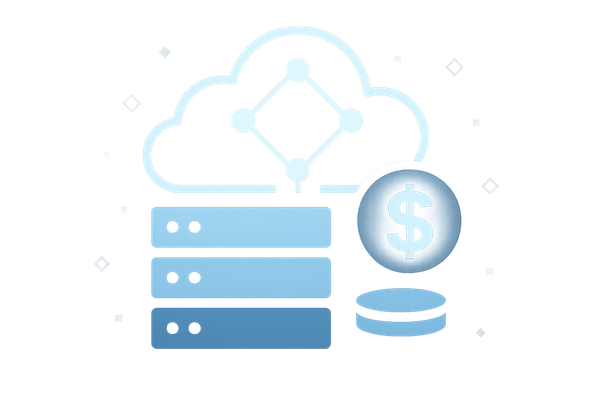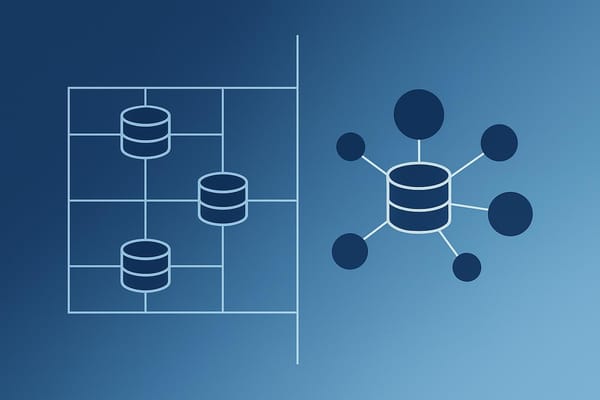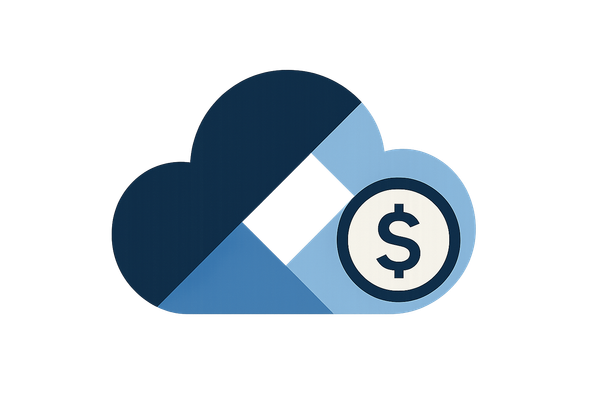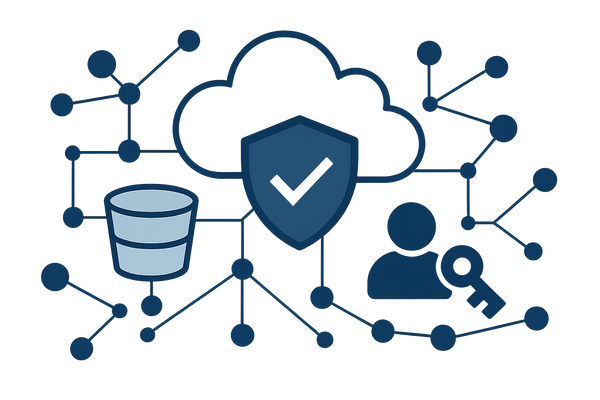AWS Lambda Data Transfer Costs: Common Pitfalls
Learn how to manage AWS Lambda data transfer costs effectively and avoid common pitfalls that can inflate your AWS bills.
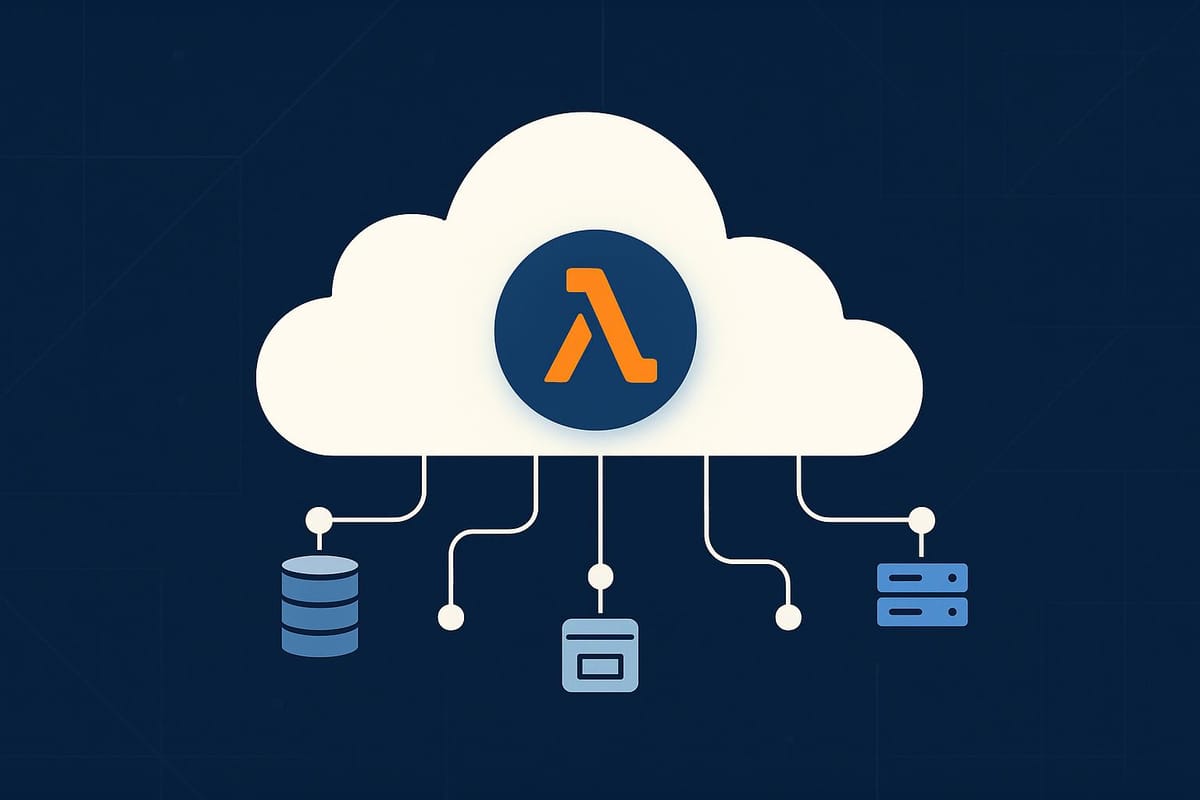
Did you know data transfer fees are one of the most common unexpected costs in AWS? For small and medium-sized businesses (SMBs), these charges, especially with AWS Lambda, can spiral quickly without proper planning. Here’s what you need to know to avoid costly mistakes:
- Inbound data transfer is free, but outbound data transfer (to the internet or across regions) can cost up to £0.07/GB or more.
- Cross-region transfers and NAT Gateway usage are among the biggest contributors to high bills.
- Mismanaging Lambda’s temporary storage (
/tmp) or relying heavily on NAT Gateways can significantly inflate costs. - Simple fixes like using VPC endpoints, staying within the same region, and compressing data can lead to major savings.
Quick Overview of AWS Lambda Data Transfer Costs:
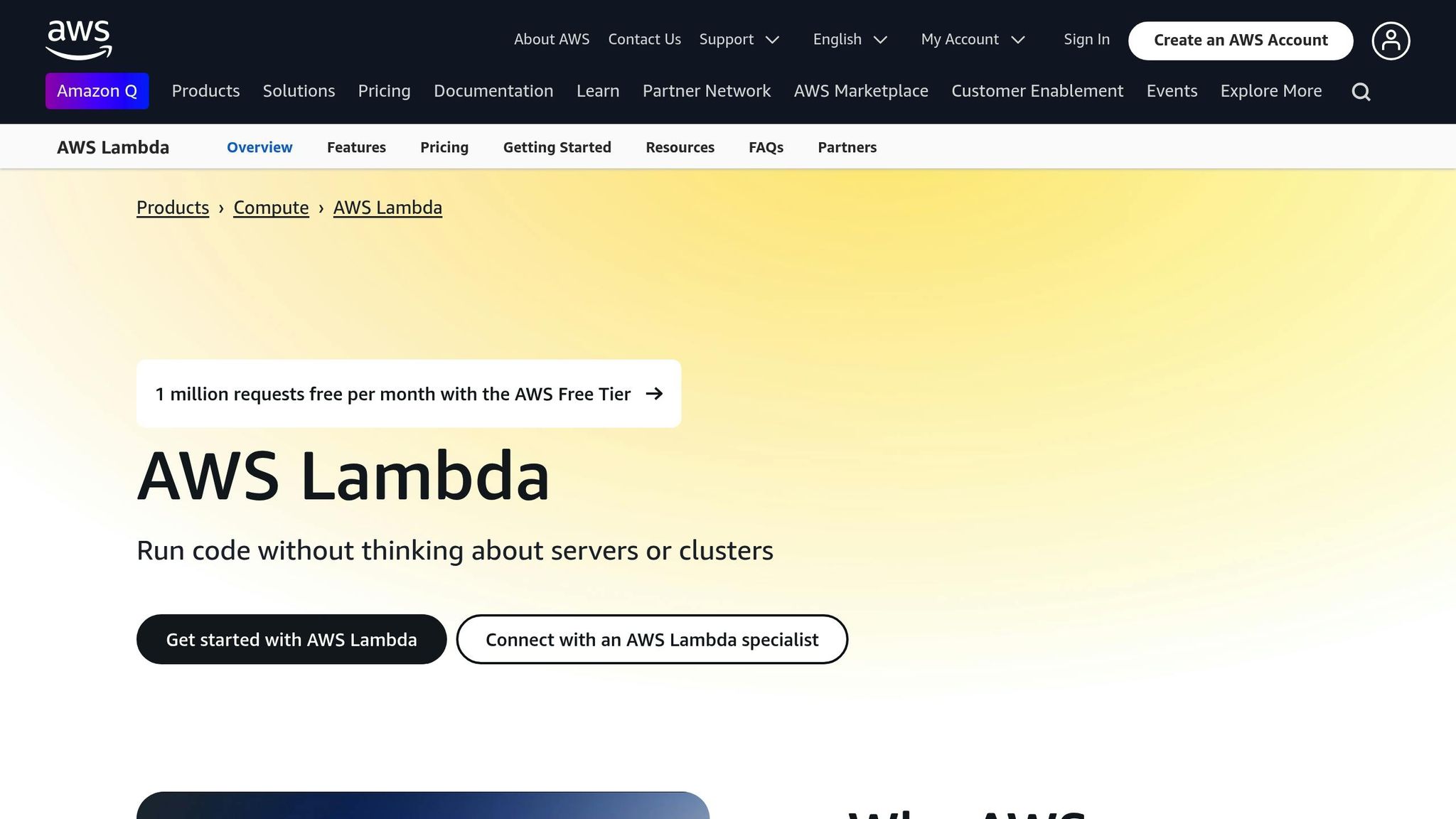
| Transfer Type | Cost |
|---|---|
| Data Transfer IN | Free |
| Data Transfer OUT (Internet) | £0.07/GB (after 100GB free) |
| Cross-Region Transfer | £0.008–£0.016/GB |
| Same Region, Different AZ | £0.008/GB |
| Same Region, Same AZ | Free |
Key Takeaway: Keep services within the same region, avoid unnecessary outbound transfers, and optimise VPC configurations to control costs. Simple changes can cut monthly AWS bills by hundreds of pounds, as shown in real-world examples. Read on for detailed optimisation strategies.
AWS Lambda Pricing: 8 Things You HAVE To Know 😎
What Drives Lambda Data Transfer Costs
Mismanaging AWS Lambda data transfers can lead to unexpected and steep expenses. To keep your serverless setup running efficiently, it's important to understand the main factors contributing to these costs.
Region and AZ Transfer Fees
The cost of transferring data between AWS regions or Availability Zones (AZs) depends on the amount of data and the direction of the transfer. For example, moving 1 TB of data between EC2 instances in different AZs within the US East (N. Virginia) region costs roughly £8 (1,000 GB × £0.008).
| Transfer Type | Cost per GB | Example Monthly Cost (1 TB) |
|---|---|---|
| Same AZ | Free | £0 |
| Different AZs (Same Region) | £0.008 | £8 |
| Cross-Region (US East to EU) | £0.016 | £16 |
Beyond internal transfers, costs can climb significantly when data exits the AWS environment.
External Data Transfer Costs
Sending data out to the internet comes with additional charges after the first 100 GB, which is free. These rates vary by region.
"AWS charges as low as £0.07 per GB for data transfers out to the internet for most US Regions, £0.095 in the Asia Pacific Region, and £0.12 per GB in Cape Town (South Africa)".
For instance, a US East Site-to-Site VPN running 12 hours daily over a week, transferring 1,000 GB in and 400 GB out, resulted in charges of approximately £25.
VPC Setup Cost Impact
The way you configure your Virtual Private Cloud (VPC) can also influence Lambda data transfer costs. Certain setups, like using NAT Gateways or specific endpoints, can significantly increase expenses.
"Avoid VPC integration unless necessary, as running Lambda inside a VPC adds latency and networking costs for data access. Only use VPC for functions that require access to private resources."
To reduce costs, you can:
- Use Gateway Type VPC endpoints (e.g., for S3) to eliminate NAT Gateway fees.
- Configure private IP routing instead of public IP addresses.
- Leverage AWS PrivateLink for secure and cost-effective cross-region communication.
Additionally, data transferred over VPC peering connections that cross AZs within the same region is charged at about £0.008/GB in both directions.
Top Data Transfer Cost Mistakes
When it comes to managing Lambda data transfer costs, there are a few common pitfalls that can significantly inflate your expenses. Let’s break them down.
Poor Multi-Region Service Setup
Spreading services across multiple regions without carefully considering the costs can lead to hefty cross-region transfer fees. These transfers typically cost between £0.016 and £0.04 per GB, and if your services communicate frequently across regions, the charges can pile up quickly. Evaluating your architecture beforehand is essential to avoid unnecessary expenses.
Overuse of NAT Gateways
NAT Gateways are convenient, but over-reliance on them can be costly. For example, in the US East region, NAT Gateways cost approximately £25.50 per month plus £0.035 per GB transferred. By comparison, VPC Endpoints are far more economical, costing about £5.65 per month and £0.008 per GB. Here’s how you can optimise:
- Gateway VPC Endpoints: Use these for Amazon S3 and DynamoDB traffic.
- Interface VPC Endpoints: Ideal for other AWS service traffic.
- Internet Gateways: Where security permits, these can be a cost-effective option.
Reassessing your network design and shifting traffic to these alternatives can make a noticeable difference in your overall costs.
Mismanagement of /tmp Storage Transfers
Lambda’s ephemeral /tmp storage (ranging from 512 MB to 10,240 MB) is another area where inefficiencies can lead to unnecessary external data transfers. Common mistakes include:
- Repeated Downloads: Downloading the same data multiple times instead of caching it locally.
- Unnecessary Transfers: Moving files back and forth between
/tmpand S3 without a clear reason. - Inefficient Resource Management: Failing to reuse connections or resources across function invocations.
As Anirudha Gudi, Research Associate at CloudThat, explains:
"Take the power of execution reuse. Initialize SDK clients and database associations outside the function handler, and cache inactive resources locally within the /tmp (temporary) directory. Consequent invocations can reuse open connections and resources in memory and in /tmp."
How to Cut Data Transfer Costs
Once you've identified the main cost drivers, there are several strategies you can use to lower AWS Lambda data transfer expenses.
Setting Up VPC Endpoints
Using VPC endpoints is a smart way to connect your Lambda functions to AWS services privately and at a lower cost. Instead of relying on expensive NAT Gateways, VPC endpoints enable direct connections that bypass the public internet entirely.
Here’s how you can make the most of them:
- Gateway Endpoints: Ideal for accessing Amazon S3 and DynamoDB. These are free to set up, with only standard data processing charges applying.
- Interface Endpoints: Suitable for other AWS services. These come with hourly fees per Availability Zone and data processing charges, based on AWS PrivateLink pricing.
To streamline costs and administration, consider centralising your endpoints in a shared services VPC. This setup can serve multiple VPCs while ensuring secure access across your infrastructure.
Additionally, optimising how data flows through your systems - by adopting event-driven designs - can further reduce expenses.
Using Event-Based Design
Event-driven architectures are a great way to cut down on data transfer costs. By reducing unnecessary polling and improving how Lambda functions communicate, you can save significantly.
A case study from DXC Technology in the energy sector highlights how this approach can lead to savings through:
- Asynchronous data processing
- Streamlined microservice coordination
- Automated exception handling and retries
To apply this in your setup:
- Use Amazon SNS and SQS for asynchronous communication.
- Keep all services in the same AWS region to avoid cross-region transfer fees.
- Compress large data payloads to minimise transfer size.
Cost Tracking Tools
Keeping an eye on your data transfer expenses is crucial, and AWS offers several tools to help with this.
| Tool | Primary Use | Key Benefits |
|---|---|---|
| Cost Explorer | Daily/monthly cost visualisation | Filter by service and usage type |
| Cost and Usage Report (CUR) | Detailed cost analysis | Gain granular insights into transfer types |
| Amazon Athena | Custom cost queries | Perform SQL-based analysis of CUR data |
"AWS Cost Explorer helps you manage your AWS costs by giving you detailed insights into the line items in your bill." - AWS Cloud Operations Blog
To make these tools even more effective:
- Activate cost allocation tags to track expenses by resource.
- Use Amazon QuickSight to build customised dashboards that visualise transfer patterns.
UK SMB Cost Reduction Example
Starting Point: £1,200 Monthly Fees
A digital health technology provider based in London was struggling with high AWS Lambda data transfer costs. Inefficiencies in their multi-region setup and an over-reliance on costly services were driving their monthly bill to £1,200. The main culprits included:
- Inefficient, synchronous Lambda-to-Lambda communications across multiple regions
- Heavy use of NAT Gateways for external service connections
- Over-provisioned memory allocations for Lambda functions
Changes Made
With guidance from AWS solutions architects, the company made targeted optimisations to their Lambda setup:
| Area | Before Optimisation | After Optimisation |
|---|---|---|
| Service Communication | Synchronous Lambda calls | Shifted to an event-driven architecture using SNS/SQS |
| Regional Setup | Multi-region deployment | Consolidated to the London region (eu-west-2) |
| VPC Configuration | Dependent on NAT Gateways | Adopted VPC endpoints for direct AWS service access |
| Resource Allocation | Over-provisioned memory | Adjusted memory using Lambda Power Tuning |
These adjustments streamlined their operations and set the stage for significant cost savings.
Cost Savings
The results were dramatic: within three months, the company reduced their monthly AWS costs from £1,200 to £384, while also improving performance and operational efficiency.
Key savings came from:
-
VPC Endpoint Implementation
By replacing NAT Gateways with VPC endpoints, the company cut down on both NAT Gateway fees and data transfer costs when accessing AWS services. -
Regional Consolidation
Moving all services to the London region (eu-west-2) eliminated cross-region transfer fees and improved latency for UK-based users. -
Event-Driven Architecture
Switching to asynchronous communication reduced execution costs by optimising resource usage and eliminating unnecessary Lambda invocations.
The company continues to sustain these savings through automated monitoring and regular cost reviews, ensuring their Lambda infrastructure remains efficient as their business scales. This example highlights how UK SMBs can achieve significant savings with a strategic approach to AWS architecture.
For more tips on cutting AWS costs for small and medium-sized businesses, visit AWS Optimization Tips, Costs & Best Practices for Small and Medium sized businesses.
Summary: Main Points for SMBs
For small and medium-sized businesses (SMBs) in the UK using AWS Lambda, managing data transfer costs effectively comes down to focusing on three main areas: infrastructure optimisation, cost-efficient design patterns, and active monitoring.
Infrastructure Optimisation
To keep costs under control, ensure your Lambda functions and the services they depend on are located in the eu-west-2 region for UK-specific efficiency. Use VPC endpoints to bypass expensive NAT Gateway charges and cut down on data transfer costs.
Cost-Efficient Architecture Patterns
Adopting smart architectural strategies can significantly reduce data transfer expenses. Here are some tried-and-tested approaches:
| Pattern | Impact | Implementation |
|---|---|---|
| Regional Consolidation | Avoids cross-region fees | Deploy all services in a single region |
| Data Compression | Lowers transfer volume | Compress API responses and datasets |
| Event-Driven Design | Reduces transfer overhead | Use SNS/SQS for asynchronous communication |
| ARM-based Computing | Cuts costs by up to 34% | Leverage Graviton2 processors |
These patterns not only help lower costs but also ensure your infrastructure runs more smoothly.
Monitoring and Control Measures
Keeping an eye on your spending is essential to prevent unexpected cost increases. Tools like AWS Cost Explorer give you detailed insights into your Lambda usage. Additionally, setting up billing alarms can alert you when costs approach your set thresholds. Monitoring ensures your expenses stay predictable and manageable.
"The simplest way to reduce AWS data transfer costs is to look for ways for your application to reduce the fat when sending outbound data. AWS egress pricing is where most data transfer costs really pile up." – Cody Slingerland, CloudZero
Memory and Performance Optimisation
Fine-tuning your Lambda functions' memory allocation can directly impact data movement and costs. Use AWS Lambda Power Tuning to right-size memory and avoid unnecessary expenses. For SMBs, AWS Lambda's free tier - offering 1 million requests and 400,000 GB-seconds of compute time - is a great way to start managing costs effectively.
FAQs
How can I reduce AWS Lambda data transfer costs for my business effectively?
To cut down on AWS Lambda data transfer costs, focus first on reducing cross-region data transfers. Keep your Lambda functions and the services they rely on within the same AWS region. This is because transferring data within a region is either free or much cheaper compared to cross-region transfers. Another way to save is by using VPC endpoints for services like S3 or DynamoDB, which can streamline network traffic and lower expenses.
You should also pay attention to outbound data transfers and work on optimising the size of your Lambda layers. Smaller layers mean less data is transferred during execution, which can make a noticeable difference. Regular audits of your functions are a good idea - removing unused libraries and dependencies can shrink deployment packages and help cut costs.
For small and medium-sized businesses, AWS offers resources like 'AWS for SMBs' that provide cost-saving tips and insights tailored to managing expenses effectively.
Why should I use VPC endpoints instead of NAT Gateways for AWS Lambda functions?
Using VPC endpoints instead of NAT Gateways for AWS Lambda functions offers several advantages. One of the biggest perks is cost savings, as VPC endpoints are generally much cheaper, cutting down on data transfer costs. They also boost security by allowing private connections to AWS services, keeping traffic off the public internet and reducing exposure to potential threats. On top of that, VPC endpoints can make your network setup simpler by eliminating the need for internet or NAT Gateways, resulting in a cleaner and more manageable architecture. For services like S3 and DynamoDB, VPC Gateway Endpoints come at no additional cost, making this option even more budget-friendly.
Why should you consolidate AWS services within the same region, and how does it help reduce data transfer costs?
Consolidating AWS services within the same region is a smart move if you're looking to cut down on data transfer costs. When services like EC2 and S3 communicate within the same region, there's usually no charge for data transfer. But if you start moving data between regions, those costs can pile up quickly.
Beyond saving money, keeping services in one region also boosts performance by reducing latency. This is especially crucial for applications that need quick and efficient data processing. For small and medium-sized businesses, sticking to a single region is a straightforward way to manage AWS expenses without compromising on performance.

